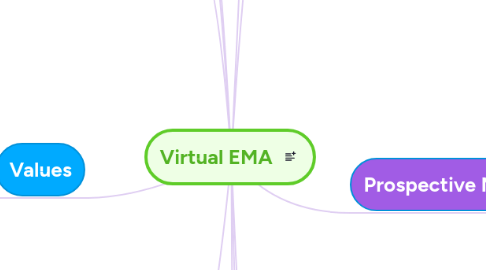Virtual EMA
by Cheryl Bledsoe

1. To bring together a diverse set of stakeholders to discuss, highlight & define model practices in emergency management, using collaborative technologies, tools and methods, to prepare, prevent, respond to and recover from active emergencies, threats and hazards.
2. Professional Association that focuses on providing a forum to focus on emergency management issues, via all voices
3. Vision
3.1. Association models collaboration & coordination using existing and emerging social tools
3.2. Transcend traditional geographic boundaries
3.3. Association breaks down barriers & silos found often in traditional profession-bound associations in emergency servies
3.4. Provides a home base for people who focus on emergency management issues from all backgrounds.
4. Mission
5. Values
5.1. Accessibility
5.2. Inclusivity
5.3. Respect
5.4. Relationship-Based
5.5. No borders
5.6. Focus on best practices
5.7. Innovation
5.8. Sharing Information
5.9. Practitioner-Review
5.10. Streamlining
5.11. Adaptability
5.12. Meaningful Curation
5.13. Openess
5.14. Multi-discipline / Diversity?
5.15. Interoperability
5.16. Partnerships
6. Objectives
6.1. Model methods of effective social collaboration, expanding emergency management issues to involve whole community in solving complex issues.
6.2. Be persistent on informing EMAs of the value of SM in order to establish trust and confidence in the technology.
6.3. Seek out advocates that are open to advancing SM use in the field of emergency management.
7. Strengthen relationship throughout the EM community and the Tech Community.
8. Slogans / Summary Statements
8.1. We're Better Together
8.2. EM is Everyone's Issue
8.3. Connect, Collaborate, Contribute
9. Existing Community Challenges
9.1. Most professional associations are individual silos of expertise
9.2. High barriers to entry in many associations
9.3. Often mistrust of non-"expert" voices (expert being self-defined as EM professionals)
9.4. Existing associations provide token voice to social collaboration methods and does not feature them.
9.5. Overall lack of diversity within EM profession. Current demographics do not adequately represent the diversity in the communities served.
9.6. Poor understanding & definition of what "emergency management" is
9.7. Unwillingness to apply measurable professional standards within the profession
9.8. Traditional EM's pace of adoption / integration of collaborative technologies or inability to see the value
9.9. Time, distance and budget limitations
9.10. Fragmented levels of knowledge, education & experience within the profession/industry
9.11. Ability to engage mentors, professionals & next generation of EMs
9.12. Linkages between higher education/researchers & practitioners
9.13. Ability to stay current with emerging trends
10. Prospective Members
10.1. **Emergency Managers
10.2. Emergency Responders / LEPC
10.3. **Community & Humanitarian Orgs
10.4. **Technology Developers
10.5. **Contractors & Planners
10.6. **Community Volunteers (VOADs)
10.7. **Colleges & Universities
10.8. **Researchers
10.9. Trainers/Educators
10.10. Crisis Communicators & PIO's
10.11. **Insurance Industry
10.12. Primary/Secondary Education
10.13. Business Continuity
10.14. Risk Management
10.15. Healthcare/Public Health
10.16. **Other Associations/Committees (IAEM ETC / VSMWG / Crisis Commons / Crisis Mappers / SBTF / PNWER / CPARM) / VOSG
10.17. Small Business / Chamber of Commerce
10.18. Chamber of Commerce
10.19. ** = primary target
11. Communications
11.1. Perhaps we consider using collaboration tools (e.g., mindmeister) more frequently in the development of VEMA and lessen the usage of email? Cheryl's SM4EM post on social collaboration dated Jan 5th made some excellent points.


